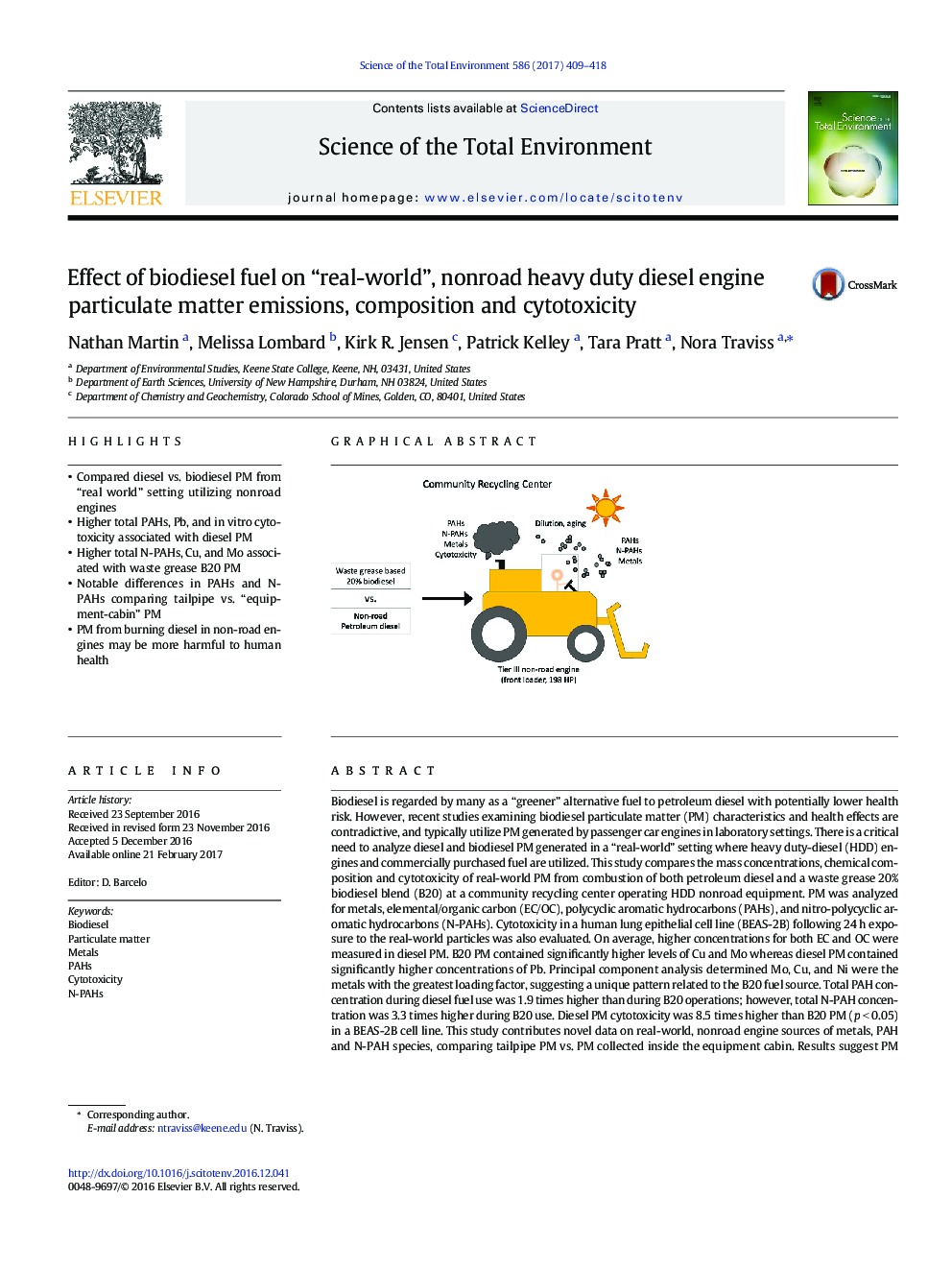| کد مقاله | کد نشریه | سال انتشار | مقاله انگلیسی | نسخه تمام متن |
|---|---|---|---|---|
| 5751136 | 1619707 | 2017 | 10 صفحه PDF | دانلود رایگان |
- Compared diesel vs. biodiesel PM from “real world” setting utilizing nonroad engines
- Higher total PAHs, Pb, and in vitro cytotoxicity associated with diesel PM
- Higher total N-PAHs, Cu, and Mo associated with waste grease B20 PM
- Notable differences in PAHs and N-PAHs comparing tailpipe vs. “equipment-cabin” PM
- PM from burning diesel in non-road engines may be more harmful to human health
Biodiesel is regarded by many as a “greener” alternative fuel to petroleum diesel with potentially lower health risk. However, recent studies examining biodiesel particulate matter (PM) characteristics and health effects are contradictive, and typically utilize PM generated by passenger car engines in laboratory settings. There is a critical need to analyze diesel and biodiesel PM generated in a “real-world” setting where heavy duty-diesel (HDD) engines and commercially purchased fuel are utilized. This study compares the mass concentrations, chemical composition and cytotoxicity of real-world PM from combustion of both petroleum diesel and a waste grease 20% biodiesel blend (B20) at a community recycling center operating HDD nonroad equipment. PM was analyzed for metals, elemental/organic carbon (EC/OC), polycyclic aromatic hydrocarbons (PAHs), and nitro-polycyclic aromatic hydrocarbons (N-PAHs). Cytotoxicity in a human lung epithelial cell line (BEAS-2B) following 24 h exposure to the real-world particles was also evaluated. On average, higher concentrations for both EC and OC were measured in diesel PM. B20 PM contained significantly higher levels of Cu and Mo whereas diesel PM contained significantly higher concentrations of Pb. Principal component analysis determined Mo, Cu, and Ni were the metals with the greatest loading factor, suggesting a unique pattern related to the B20 fuel source. Total PAH concentration during diesel fuel use was 1.9 times higher than during B20 operations; however, total N-PAH concentration was 3.3 times higher during B20 use. Diesel PM cytotoxicity was 8.5 times higher than B20 PM (p < 0.05) in a BEAS-2B cell line. This study contributes novel data on real-world, nonroad engine sources of metals, PAH and N-PAH species, comparing tailpipe PM vs. PM collected inside the equipment cabin. Results suggest PM generated from burning petroleum diesel in nonroad engines may be more harmful to human health, but the links between exposure, composition and toxicity are not straightforward.
140
Journal: Science of The Total Environment - Volume 586, 15 May 2017, Pages 409-418
